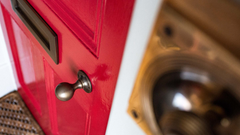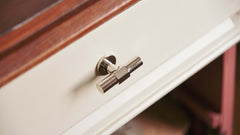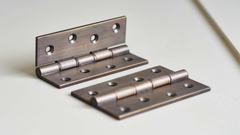Architectural Design Periods

GEORGIAN 1714 – 1837
Georgian covers the period under the reign of four King Georges (King George I to King George IV), some 126 years, and so is frequently split into several phases: Palladian, Early and Late Georgian and Regency.
Underpinning Georgian design is the desire to recreate the ancient classical world as at this time much of the upper classes would travel throughout Europe on the ‘Grand Tour’. Another important influence was the Palladian style, known for its effortless and beautiful use of form and proportion and subtle decorative elements.
During this time many great stately homes were built, but most prevalent was the townhouse and the era has become synonymous with “the many elegant town developments, the tree-lined terraces, select squares and crescents that proliferated after 1740″ architecture.com
Georgian Characteristics:
- Traditionally brick
- Front doors with central knobs at waist height and no letterbox
- Sash windows
- Spacious and light
- Well proportioned and symmetrical (‘double fronted’)
- Simple with decorative elements in the smaller features
Examples of our Georgian style fittings:
Brass Door Knobs with Square Backplate - Brass Georgian Style Door Knobs
REGENCY 1811- 1820
Regency, which falls under the Georgian period has become known as a style in its own right and covers the period when King George IV was Prince Regent. It developed from the Georgian style, refining its elegance.
Regency can be recognised in the popular terraces initiated by John Nash who designed Regent Street in London. A typical example of regency architecture is Lansdowne Crescent in Royal Leamington Spa, above.
Regency Characteristics:
- White facades
- Entry ways to the main front door (usually black)
- Decorative iron railings, balconies and french windows
- Pale colour schemes and polished wooden floors
Examples of our Regency style fittings:
Aged Brass Regency Style Door Knocker - Brass Regency Bloxwich Cabinet Knobs - Brass Regency Style Rim Latch
VICTORIAN 1837 – 1901
The eclectic styles of the Victorian era stemmed from the innovation and industrialisation of the time. The period saw the development of the railway network allowing people to easily move about: “architects travelled extensively, becoming inspired by the many forms of regional, national and international architecture.” architecture.com
The mix of styles by which they were inspired and sourced ideas from included Classicism, Italian style, Gothic revival and later Arts and Crafts. The industrial revolution also saw the building of millions of Victorian houses across Britain.
Victorian Characteristics:
- Terraces and detached houses in brick or local stone
- Front doors were typically painted and had four panels
- Door furniture was often solid rather than over elaborate
- Sash windows (now with larger panes of glass)
- Excessive ornamentation
- Rich, dark colours
- Upholstered furniture, wallpaper (think William Morris) and dado rails became popular
- Brass, cast iron, pewter and tin light fittings
Examples of our Victorian style fittings:
Victorian Style Cast Iron Rim Latch - Small Brass Octagonal Door Pull - Brass Claverley Bell Pull
ART NOUVEAU 1890 – 1914
Art Nouveau, an international style, moves away from the historic revival styles of the 1800s towards Modernism. Rather than look to history for inspiration it was influenced by the forms, structure and force of nature. Its visual style and philosophy spanned across art, architecture, applied art and anything in-between.
During the 1880s and 1890 Japonism was popular and this too influenced artist and designers, in particular Japanese wood block prints. The style is recognised by its use of curves and flowing lines, and the linear style as used by Charles Rennie Mackintosh whose ‘Hill House’ is pictured above. Architects would try to harmonise buildings with the natural environment.
Art Nouveau Characteristics:
- Curves, flowing lines, floral patterns and organic forms
- Vertical lines
- Muted colours
- Beaten metal door handles and light fittings
- Curves in windows, arches and doors
- Use of stylised wallpaper, tiles, stained glass and wrought iron.
Examples of our Art Nouveau fittings:
Aged Brass Loop Door Knocker - Brass Postal Letterplate - Brass Art Nouveau Fingerplate
ART DECO 1925 – 1937
Art deco began in Europe, in particular Paris and again extended across all forms of design.Besides the use of traditional craft, following on from Art Nouveau, artists were also celebrating new technology and their belief in the machine age can be seen in their visuals and choice of materials.
Art Deco came to represent luxury and glamour, it was a modern style which drew on a variety of sources: “Designers sought to infuse jaded traditions with new life and to create a modern style based on a revitalised decorative language. To do so, they borrowed from historic European styles, as well as from the pictorial inventions of contemporary Avant Garde art, the rich colours and exotic themes of the Ballets Russes, and the urban imagery of the machine age. They also drew on more distant and ancient cultures.” www.vam.ac.uk
Art Deco Characteristics:
- Geometric and angular shapes
- White facades and flat rooves
- Geometric door surrounds
- Tall windows and curved metal corner windows
- Use of chrome, glass and mirrors
- Rich colours
Examples of our Art Deco fittings:
Art Deco Door Knocker - Art Deco Cabinet Knobs - Art Deco Bell Push









